Day 1 :
Keynote Forum
Christopher Niezrecki
Chair, Professor, Director - Center for Wind Energy, Co-director - Structural Dynamics & Acoustic Systems Laboratory
Keynote: Recent advances in wind turbine technologies and sensing for structural health monitoring
Time : 08:50-09:20

Biography:
Dr. Niezrecki is Professor and Chair of Mechanical Engineering at the University of Massachusetts Lowell, the Co-Director of the Structural Dynamics and Acoustics Systems Laboratory, the Director of the Center for Wind Energy at UML, and also the Director of the National Science Foundation-Industry/University Cooperative Research Center for Wind Energy Science, Technology and Research (Windstar). He has been directly involved in structural dynamics, acoustics, smart structures and materials, and sensing research for over 23 years, with more than 100 publications. He has conducted over $11M USD of sponsored research through grants from numerous federal and state agencies as well as several companies.
Abstract:
A significant amount of interest exists in performing wind turbine structural health monitoring, characterization, and evaluation. The presentation highlights some recent advances in optical sensing, acoustic methods, infrared, UAV sensing, and radar technologies that can be applied to characterize wind turbine structural health, structural dynamics, damage, and embedded defects. Non-contacting, full-field surface dynamic measurements are presented that leverage three-dimensional (3D) digital image correlation (DIC), point tracking (PT), and motion magnification methods. The approaches are able to obtain full-field geometry data, in three dimensions. Information about the change in geometry of an object over time can be found by comparing a sequence of images and virtual strain gages (or position sensors) can be applied over the entire visible surface of an object of interest. Non-contact structural dynamic information can be extracted. Results from the structural interrogation of acoustic monitoring, infrared sensing, and radar sensing are also presented on a variety of test objects. Several examples of various sensing technologies are presented on wind turbine rotors and blades. Additionally, some recent advances in wind energy research that originated within the National Science Foundation-Industry/University Cooperative Research Center for Wind Energy Science, Technology and Research (Windstar) will be presented.
Keynote Forum
Winfried Hoffmann
Applied Solar Expertise-ASE, Former president of EPIA, now SolarPower Europe.
Keynote: PV as A major contributor to the 100% renewably powered world
Time : 09:20-10:00

Biography:
Winfried Hoffmann studied solid state physics, diploma in superconductivity and finished with a PhD-thesis in biophysics (laser flash photolysis). He started his industrial career in 1979 at NUKEM/RWE in the area of CdS/Cu2S – Thin-Film solar cells and modules, amorphous Silicon as well as Dye Solar Cells. In the mid-1980s and 90s, a pilot production for MIS-inversion layer c-Si solar cells and large area modules was put in operation. From 1994 he served as Managing Director to "Angewandte Solarenergie - ASE GmbH" (JV DASA and RWE). In the same year the acquisition of 100 % shares of Mobil Solar as a subsidiary company was done with special focus on their developed ribbon EFG technology. In the late 90s the company was renamed RWE Solar and was one of the worldwide 5 biggest production companies. The first inline PE-CVD machines for SiN were developed and built in these years. In 2007 he joined Applied Materials to become Chief Technology Officer and Vice President of the Solar Business Group and member of the Management Board of the German-based Applied Materials GmbH. For many years he was a member in the supervisory board of listed companies (SMA Solar Technology AG and SolarFabrik AG) and was also active in numerous Research Institutes (FhG-ISE, ISFH, Helmholtz Center Berlin, ZSW, and DLR). He served many years in solar associations in order to convince politicians to support the PV market development (German BSW Solar and European EPIA, now SolarPower Europe). Since 2011 he gives lectures about Renewable Energy at the universities Konstanz and Freiburg. In 2012 he received the John Bonda prize from EPIA and the prestigious “European Becquerel Prize for Outstanding Merits in Photovoltaics” from the European Commission. The World Renewable Energy Network (WREN) awarded him as “Solar Pioneer” in 2014.
Abstract:
Only a few years ago it was difficult to explain a world, powered 100% by renewables only – not only electricity but all secondary energy needs, including transportation, heating, and cooling as well as industry needs. The major reason for this was that the production cost for electricity from wind and solar was – although characterized as most elegant - much too high and electricity storage not seen as an option at all. Only with large centralized solar concentrating systems together with hydrogen production (hydrogen economy) or a world-wide distribution system (using high voltage DC current grids) a renewably powered world was seen potentially possible in the very long run. With the rapidly declining cost per produced kWh from PV and wind, together with the push from the automotive sector for Li-ion batteries which also results in a quick reduction of electricity storage cost, there is now – including IoT (Internet of Things) - a new horizon open how to serve man-kinds energy needs rather quickly with renewables only. After analyzing today’s energy needs and how they are served with primary (fossil, nuclear and renewables with ~150 PWh, P=10~15) and secondary energy (electricity, fuel, (process)-heat with ~90 PWh), the future demand for secondary energy is analyzed.
Today’s energy inequity will be changed to a situation where each person on the globe will have a similar energy usage per year, comparable to the living standard today in the industrialized world. An increase in energy efficiency by a factor of 3 will be explained. The global population for the future world is estimated to be ~10 billion according to UN statistics. With this, the future secondary energy offering has to be ~150 PWh per year. The portfolio of renewable energy technologies is discussed and their respective share analysed. PV is seen as one of the prominent technologies in the future, especially when comparing their production cost – more precise: Levelized Cost of Energy - compared with clean fossil and new nuclear power plants, even when including the necessary electricity storage cost. The crucial role for new materials and processes for future solar cells and modules together with the parallel development of storage devices and fuel cells is emphasized. The transition towards 100% renewable energy makes most sense economically, socially and from an energy security point of view. This and the timely coincidence of several break-through technologies will trigger the transformation towards a 100% renewably powered world quicker as many expect also on a global level.
Keynote Forum
Yi-Lung Mo
Chair Professor - University of Houston, USA
Keynote: Carbon nanofiber aggregate sensors for sustaining resilience of nuclear power plants to multi-hazards
Time : 10:00-10:30
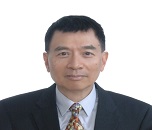
Biography:
Dr. Yi-Lung Mo, F.ASCE, F.ACI, F.Humboldt is Professor at the Civil and Environmental Engineering Department, the University of Houston (UH). He is also Tsinghua Chair Professor, Institute of Future City and Infrastructure, Tsinghua University, Beijing, China. His technical interests are multi-resolution distributed analytical simulations, large-scale concrete structure testing and field investigations of the response of complex structures, on which he has more than 400 research publications, including 201 refereed journal papers, many conference, keynote and prestige lectures, research reports, books and book chapters, magazine articles and earthquake field mission reports. In the past several years, he has focused on energy material research, especially the application of carbon nanofiber material for sustaining resilience of nuclear power plants to multi-hazards.
Abstract:
Multi-hazards such as natural hazards (floods, earthquakes, severe storms and wildland fires) or manmade disasters (nuclear disaster, oil spills, and terrorist attacks) lead to substantial damage on critical infrastructures and communities and have social, economic and environmental consequences. The immediate impacts on multi-hazards include loss of human life and damage to infrastructures. Multi-hazard mitigation for nuclear power plants forms a vital input in disaster management, the design of development strategies and emergency response forecasting. In this lecture, we will present how to develop a robust and cost-effective real-time carbon nanofiber aggregate (CNFA) sensor system that can be embedded at nuclear power plants for damage detection during events such as earthquakes, nuclear disasters, and missile attacks, and for water level monitoring in nuclear power plants during flooding. A real-time multi-hazard alert software system will also be developed to monitor the data generated by the CNFA sensors and produce proper alerts when hazardous events are detected. The CNFA acts as a strain sensor. The stresses in the critical regions of nuclear power plants due to natural or man-made hazards can be determined by taking into account the strains developed on the surface of the CNFA. This strain produces an equivalent stress in the CNFA that can be derived from its electrical resistance variation. The CNFA sensor system determines the stresses and strains in nuclear power plants and transmits the information to immediately provide real-time information to decision makers. We will also develop a predictive computational modeling platform, which incorporates various couplings between mechanical, electrical and thermal effects and provides an accurate coupled response (e.g., displacements, stresses, temperature, electrical fields) of nuclear power plants.
- Session 1: Waste to Energy | Energy Storage & Conservation | Bioenergy & Biotechnology | Green Energy & Economy | Advanced Nanomaterials | Solar Energy | Renewable Energy | Geothermal Energy
Location: Charles Ballroom A
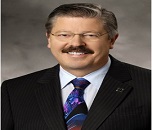
Chair
Winfried Hoffmann
Applied Solar Expertise - ASE, Germany
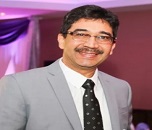
Co-Chair
Kuldip Kumar
Metropolitan Water Reclamation District of Greater Chicago, USA
Session Introduction
Jeffrey Lodge
Graduate Director of Environmental Sciences, Associate Professor - Rochester Institute of Technology, USA
Title: Food and food processing waste to energy: Sustainable energy for western NY
Time : 11:00-11:25
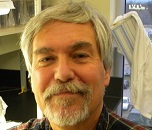
Biography:
Dr. Lodge completed his PhD in Microbiology from the University of Mississippi Medical Center before doing postdoctoral research at Utah State University and Boston University. He then took a position in the Thomas Gosnell School of Life Sciences at the Rochester Institute of Technology where he still works today. He has been working on the treatment of food waste and food processing streams to generate sustainable energy for Western NY. He teaches courses in Bioenergy, Wastewater Microbiology, Food Microbiology, and Bioremediation. He is now the Director of Graduate Program in Environmental Science at RIT.
Abstract:
New York is a major producer of milk, yogurt, and cheese in the US. Much of these industries are centered in Western NY and a considerable amount of waste is generated. Western NY is also the home of many small and large Universities/Colleges that generate significant food waste. Soon in NY food waste/food processing waste will no longer be accepted at landfills and so this must be addressed. Land application of food processing on agricultural land is also a problem that is very tightly regulated. Several options are available for treating food waste and food processing waste which includes treatments to generate energy from food biomass and reduce nutrient loads of food processing waste to allow for land applications or movement to wastewater treatment plants. My lab is approaching these problems through two avenues, anaerobic digestion of food waste and using microalgae to treat food processing waste streams. Both processes ultimately lead to energy production, electricity from AD, biofuels, and electricity from the microalgae. Food waste streams that are readily available include, Greek yogurt and cheese whey, egg processing wastewater, tofu whey, apple pomace, spent coffee grounds, and solid food waste. Solid food waste, yogurt and cheese whey are now being digested at large scale ADs and experiments are ongoing with egg processing waste. Microalgae treatment of yogurt, cheese, and tofu whey along with egg processing waste are ongoing with significant nutrient reduction and use of the algae biomass for fuels. We hope to integrate various processes to provide sustainable energy.
Douglas L. Karlen
Senior Research Soil Scientist - USDA-ARS at the National Laboratory for Agriculture and the Environment, USA
Title: Landscape design strategies for sustainable biomass feedstock supplies
Time : 11:25-11:50

Biography:
Dr. Douglas L. Karlen is a Distinguished Senior Research Soil Scientist with the USDA-ARS at the National Laboratory for Agriculture and the Environment (NLAE) in Ames, IA. His research on soil quality assessment and sustainable bioenergy/bio-product feedstock harvesting is recognized internationally. He is author or co-author of 235 journal articles and more than 150 other publications. Doug is a Fellow of the American Society of Agronomy, Crop Science Society of America, Soil Science Society of America, Soil and Water Conservation Society, and recipient of the Hugh Hammond Bennett award for national and international leadership in natural resources conservation.
Abstract:
Sustainable bioenergy production requires abundant, reliable, and clean (low ash or soil contaminated) feedstocks. Potential cellulosic sources include crop residues (e.g., corn stover, small grain or sugarcane straw) and energy crops (e.g., switchgrass or miscanthus). Environmental, economic, and social sustainability are our focal point because plant biomass also supports critical ecosystem services including building and maintaining soil health. Our project team is striving to quantify sustainable crop residue harvest and energy crop production goals for different soil resources and landscape positions. We are examining seed, fertilizer, water, herbicide, labor, machinery costs and many other metrics through simulation modeling and on-farm field research. It is important to recognize that agricultural biomass (perennial energy crops and crop residues) can be used to produce liquid fuels, chemicals, and heat/power. Direct comparisons to the wind and solar energy production would only be partially relevant. Our primary (targeted) end users are producers of liquid biofuels. For that purpose, one ton of agricultural biomass will produce about 70 gallons of ethanol. If used for heating, one ton of agricultural biomass will produce about 14 million Btu. If used for power generation in an efficient production facility, one ton of agricultural biomass can yield approximately 1,250 kWh of electricity. Currently, perennial energy crops can yield between 3 and 8 tons (or more) per acre depending on plant species and field conditions. Although land-use issues are an important component associated with biomass energy production, this project is pursuing an innovative strategy for identifying less profitable areas within current crop production fields and targeting them for energy crops. Our goal is to provide a land base for energy crops that do not infringe on highly productive agricultural lands, thereby simultaneously increasing both land-owner and environmental benefits (i.e., better soil health) on lands currently having negative environmental impacts due to soil erosion, nutrient leaching, loss of soil organic carbon, or emission of greenhouse gases. Examples of soil health measurements on row-crop versus perennial Conservation Reserve Program (CRP) land, using physical, chemical, and biological indicators, and being interpreted with the Soil Management Assessment Framework (SMAF) will be discussed.
Willem Lange
Director, Business Development & Utility Marketing - WaterFurnace International, USA
Title: Renewable revolution: Geothermal heat pumps are substantially changing the renewable landscape with thermal energy
Time : 11:50-12:15
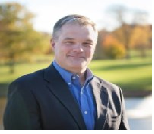
Biography:
Will Lange has a diverse background in the US Coast Guard and the HVAC industry. With experience ranging from political liaison assignments in Western Africa to Fortune 50 Product Management, since 2010 he has dedicated his career to the cause of harvesting renewable thermal energy with geothermal heat pumps.
Abstract:
Renewable thermal energy is a vast untapped resource easily accessible around the planet. At the same time, nearly half the energy used in homes and office buildings is for thermal energy. Geothermal heat pumps already harvest terawatt-hours of renewable energy every year to provide heating, cooling, and hot water from Alaska to Florida. The Lifecycle Cost of Energy from these heat pumps is lower than any other form of renewable energy today while operating efficiencies range from 100% - 500% more efficient than existing alternatives.
Implementing widespread use of geothermal heat pumps can drive de-carbonization and eliminate on-site fossil fuel use. In fact, this is a critical part of Environmentally Beneficial Electrification.
There are a number of compelling reasons to learn more about this powerful technology:
• The 30% US Federal Tax Credit is back in place for geothermal heat pumps.
• Geothermal heat pumps harvest renewable energy more efficiently and more economically than any other available heating and cooling solution.
• Delivering 15 – 30 MWh of renewable energy per home per year, geothermal heat pumps harvest thermal energy at less than $0.03 per KWh over 30 years.
• Utilities are eagerly seeking Environmentally Beneficial Electrification where carbon fuels are used. That’s what geothermal heat pumps do better than anything else.
• The US grid is de-carbonizing rapidly; geothermal heat pumps capitalize on that trend.
Widespread understanding of how geothermal works, and its impact, is key to our greener future.
Evangelos I Gkanas
Leader - Hydrogen for Mobility Research Group & Assistant Professor at Coventry University, United Kingdom
Title: Novel hybrid-powered stand alone autonomous unmanned aerial vehicle (AUV) ground base station
Time : 12:15-12:40

Biography:
Dr. Evangelos I. Gkanas has completed his PhD in Advanced Energy Materials at the National Centre of Scientific Research "Demokritos", Athens, Greece. He continued his research endeavors as Research Fellow at the University of Nottingham (UK). He is the leader of the Hydrogen for Mobility Research Group at Coventry University (UK), where he is also an Assistant Professor in Thermodynamics. He has published more than 20 scientific outcomes at peer-reviewed journals and serving as an editorial board member in several journals.
Abstract:
The technology of Autonomous Unmanned Vehicles (AUV) for air, land or sea applications has grown dramatically in the recent years, and continue to grow exponentially. With the above increase, in both autonomous systems and autonomous navigation algorithms a demand for efficient and reliable alternative renewable power sources is vital to fully support long endurance autonomy. Recently, a new type of Ground Stations has arisen, which it is fully autonomous, self-contained and automated in terms of Autonomous Unmanned Vehicle (AUV) deployment, refueling, recharging and storing. Two of the main and highly desirable requirements for the above state-of-the-art Ground Stations for Autonomous Unmanned Vehicles are; to be off-grid and to have a low maintenance interval (by a human technician and/or operator). Thus, it can be permanently and reliably located to remote locations and perform a variety of tasks from agriculture and geology to defense and surveillance. Therefore, a safe, low maintenance, efficient and high-power density energy source is needed to enhance and support a hybrid power architecture and extend the power autonomy of such AUV base station. The main outcome of the current project will be the design and development of a novel hybrid renewable power system (combination of battery, supercapacitors, solar, wind, and hydrogen), which will be part of the design and development of the prototype of the stand-alone novel Ground Stations for Autonomous Unmanned Vehicles.
Sardar Ahsan Younus
Head of Environment Department for USAID funded Energy Projects in Pakistan
Title: Community driven initiative to reduce fossil fuel consumption for environmental protection and associated economic benefits
Time : 12:40-13:05

Biography:
Sardar Ahsan Younus has completed his Ph.D. at the age of 40 years from England. He is the Head of Environment Department for USAID funded Energy Projects in Pakistan while serving at Techno Consult International, Islamabad, Pakistan. He has vast experience of working on Environmental Projects both in Public as well as Private sector.
Abstract:
Naran is a famous tourist attraction in Pakistan in Khyber Pakhtoonkhwa province. Naran hosts high-rise Himalayan mountains covered with snow and lakes. Summers are cool, which attracts hundreds of thousands of tourists. Hotel industry here has a strong base with modern accommodation facilities. There was no power supply from the national grid to Naran in 2012 due to disruption of power supply resulting from heavy snowfall in previous years. People had to use fossil fuels i.e. diesel, gasoline, and firewood to operate power generators and to use heat for cooking and water heating. Firewood from forest cutting is a major environmental concern in Naran and surrounding valleys. It impacts the local environment negatively which is evident from the complaints of locals that rain and snowfall have reduced considerably in the last decade while flash floods are now common with landslides and road blockades. In an effort to control forest cutting, reducing the use of fossil fuels and improving the hoteling business, Tourism Promotion Association of Kaghan (TPAK) along with 3 hotels and 15 houses agreed in 2012 to install a micro hydel unit of 75 kilowatts on a local stream. WISIONS institute of Germany provided funding for the technology while TPAK and local partners funded construction component. Miro hydel project started production of electricity in late 2014. A local SME, created for the sustainability of the project, owns the micro-hydel system. This study focused on electricity production through renewable resource and its contribution in avoidance of addition of carbon in the atmosphere. Data collected for the last three years indicates that the micro hydel project contributed in avoidance of 386.65 tons of carbon into the atmosphere in the last three years. The carbon avoidance in the year 2015 was 122.02 tons, in 2016 it was 135.10 tons and it was 129.53 tons in 2017. The project has contributed considerably to the reduction of wood and fossil fuel usage in Naran. Previously, the Diesel usage by 3 hotels in Naran in 2012 was 48,421 liters, gasoline usage was 19,696 liters and wood usage was 80,290 kg. The project is ready for carbon credit mechanism.
Kenneth Okafor
Professor of Nuclear Engineering - South Carolina State University, USA
Title: Viscosity modeling and flow properties of non-edible oils as feed-stock in biodiesel production
Time : 14:25-14:50

Biography:
Dr. Okafor graduated from the Ohio State University with a Ph.D in Nuclear Engineering in 1988. He is currently a professor of Nuclear Engineering at the South Carolina State University where he teaches courses in nuclear sciences and engineering. His areas of interest include Reactor Physics, Nuclear Criticality Safety and Renewable Energy. Prior to coming to South Carolina State University he worked at the Savannah River Laboratory (SRL) in Aiken, SC under Dupont and Westinghouse companies (facility operators) involved in research and development in reactor analysis and technical support in the handling and storage of nuclear materials.
Abstract:
In a previous study, non-edible plant seeds were sought as sources of vegetable oils as alternatives to soybean oil which is the major source of oil feedstock for the manufacturing of biodiesel in the United States of America. Soybean oil as a resource also doubles as a staple food: it is the most widely consumed cooking oil (frying, baking and a condiment in salads). Commercially, soybean oil is also used in printing ink and oil paint formulations. Hence the motivation for the search for other oil sources especially for the non-edible/non-staple sources. In this study, several plant seeds which were selected based on their ease of cultivation and short maturation periods were investigated for the yields, densities and the degrees of saturation and compared to the soybean output as a benchmark.
A further investigation is undertaken in the present study to compare the viscosities and the Cloud Point (CP) temperatures of the benchmark soybean oil and the non-edible oils that compared favorably to the soybean oil in terms of the yields and Iodine Values (IV). Different mathematical models were applied in the fitting of the measured viscosity data. However, since the models did not adequately represent the data in the region of interest (lower temperatures), a new mathematical model was developed which in combination with measured data were used to infer the Cloud Point temperatures of the oil samples.
The inferred Cloud Point temperatures ranged from -17oC for the Lavender oil to 8oC for the Morning Glory oil. For the benchmark oil (Soybean), the Cloud Point temperature was inferred to be 0oC. Therefore, most of the sample oils had Cloud Point temperatures lower than for the benchmark which confirms these oil candidates as possible replacements of the benchmark.
Beatriz Ruiz Camacho
Professor at Guanajuato University and Vice-president of the Mexican Hydrogen Society
Title: Pt Nanoparticles onto carbon base substrates as anodic materials for direct alcohol fuel cells
Time : 14:50-15:15

Biography:
Beatriz Ruiz Camacho has completed her PhD at the age of 30 years from National Polytechnic Institute. She also obtained an MSc in Science and Materials Engineering from Autonomous Metropolitan University. Actually, She is a Chemical Engineering professor at the Guanajuato University. She has published as the first author in more than 15 papers in reputed journals and she is Vice-president of the Mexican Hydrogen Society. She is author and coauthor of chapters book related with materials for fuel cells. She is expertise in nanomaterials synthesis and characterization, fuel cells, electrocatalysts and renewable energy. She has given lectures at various national and international conferences.
Abstract:
The search for new catalytic materials for direct alcohol fuel cells is the aim of this work. One of the main challenges presented by fuel cells is to have adequate catalytic material dispersed on a substrate to enhance its catalytic activity. We have synthesized by the ultrasound technique nanostructured electrocatalysts of Pt supported different carbon base substrates as i) carbon nanotubes (NTC) and ii) zeolite-carbon composite and compared with iii) Vulcan carbon with the goal of studying the effect of the properties of the substrate on the electrical conductivity for the methanol oxidation reaction (MOR) in acid media. Particle size and metal dispersion were evaluated by transmission electron microscopy (TEM) and X-ray diffractometer (XRD) technique was used to investigate the crystalline structure. Cyclic voltammetry (CV) and chronoamperometry (CA) were performed towards the methanol oxidation reaction (MOR) in acid medium. Preliminary results show the properties of substrates as porosity, surface area and the chemical surface of substrate modified the dispersion of Pt nanoparticles as well as the interaction of metal-support which is a parameter responsible for the electrocatalytic activity. Materials synthesized catalyze the MOR, however, different onset potentials and intensity of the forward and backward oxidation peaks were obtained. The presence of zeolite on the substrate plays an important role in the oxidation of methanol. When using carbon nanotubes as a substrate, the Pt/NTC shows low stability and low intensity of the oxidation peaks. As a conclusion, the ultrasonic method allows to obtained Pt nanoparticles less of 10 nm supported on different substrates, the electrochemical activity of the materials synthesized follows the tendency Pt/zeolite-C> Pt/carbon > Pt/NTC.
Javier Fernandez-Garcia
Professor at University of Leeds, United Kingdom
Title: Controlled selectivity via kinetic resolution with transient operation
Time : 15:15-15:40

Biography:
Dr Javier Fernandez-Garcia studied his bachelor (2002-2007) and master’s degree (2010-2011) in Spain. He worked in industry from 2007 to 2014 in companies such as Saint-Gobain, XSTRATA, Biogas Fuel Cell and HUNOSA. He completed his PhD at University of Oviedo (2011-2014). After that he worked as a Research Fellow at University of Warwick from 2014 to 2016. Then he developed research activities in Stoli Catalysts Ltd (Spin-out company) and he was finally appointed as Lecturer in Chemical Engineering at University of Leeds in 2017.
Abstract:
A transient operation has been previously considered in many industrial processes where either heat recovery or production rate can be considerably improved as compared to steady-state operation. The effect of periodic temperature oscillations has been studied in the hydrogenation and isomerization of D-glucose over a supported Ru-catalyst in a micro trickle bed reactor. It was found that the preferred reaction pathway depends on the frequency of periodic temperature oscillations. The catalyst based on ruthenium nanoparticle supported over hypercrosslinked polystyrene was tested in the reaction of hydrogenation/isomerization of glucose and maltose under radiofrequency heating in a continuous flow fixed bed reactor. The catalytic activity and selectivity were investigated under the steady-state and transient operation reactor modes. The transient operation of periodic temperature oscillations with a low amplitude of 14 oC showed a dramatic change in the reaction pathway altering the preferential reaction from hydrogenation to isomerization for both substrates studied. The period of temperature oscillations affects the hydrogen coverage which can determine the main reaction which takes place. The data shows that the transient operation mode could have a high impact on biorefinery because fructose is one of the main feedstocks for 5-hydroxymethylfurfural and other valuable compounds in the field. Moreover, the work demonstrates that a concept of a superior product selectivity achieved by introducing transient operation, which can likely be applied to other reaction classes and processes.
Krzysztof Naplocha
Professor at Wroclaw University of Science and Technology, Poland
Title: Thermal performance of the latent heat storage units with aluminium porous structures
Time : 16:00-16:25

Biography:
Krzysztof Naplocha has completed his PhD at the age of 33 years from Wroclaw University of Science and Technology. He has been involved in various science project covering metal matrix composite materials reinforced with ceramic fibers or intermetallic skeletons. Currently, he is developing high porous metal structures produced by metal casting. Much of his work has been on improving heat transfer in energy storage systems. He has published more than 120 papers in reputed journals and is the co-author of Intermetallic matrix composites: properties and applications (Woodhead Publishing, 2018) and Advances in materials science research (NY: Nova Science Publishers, 2012).
Abstract:
The heat accumulators based on phase change materials (PCM) operate in charging/discharging cycles. Their effectiveness depends on the heat transfer rate and value of the latent heat of melted and solidified materials. Usually, they characterized by low thermal conductivity what increases thermal gradient inside the chamber and prolongs charging time. In order to enhance heat transfer from energy source various metal shapes like fins, pipes or foams can be embedded in PCM. Investment casting method offers manufacturing highly porous structures with developed surface and appropriate stiffness. In this work examination of heat transfer of composite PCM included paraffin and aluminium alloy spatial casting are shown. Thermal performance of laboratory accumulator with pure paraffin was tested and compared with results determined when metal foam or honeycomb structures were introduced into paraffin. Metal inserts accelerating heat transfer melted or cooled paraffin faster and thus charging/discharging time is reduced. Performed multiple charging cycles revealed some issues with fatigue damage of metal foam. In comparison to pure paraffin metal structures reduced temperature gradient within the chamber accumulator ca. 2-3 times. Convection of liquid paraffin can be slightly restricted therefore arrangement of honeycomb channels was examined and favorable position determined.
Kuldip Kumar
Senior Environmental Scientist with Metropolitan Water Reclamation District of Greater Chicago, USA
Title: From waste treatment to resource recovery: A Chicago Sustainability story
Time : 16:25-16:50
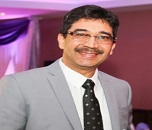
Biography:
Dr. Kuldip Kumar is a Senior Environmental Scientist with MWRD Chicago. He was more than 25 years of experience in the area of water quality especially fate and transport of nutrients and other environmental stressors like pharmaceuticals and personal care products. For the last 5 years, his research has been focused on ‘Resources Recovery from Wastewater’. He manages the research program on utilizing algae to recover nutrients from wastewater and develop markets for algae biomass based on its characteristics. He has published over 70 research articles/book chapters and has served on many federal grant review panels.
Abstract:
The Metropolitan Water Reclamation District of Greater Chicago (District) was created in 1889 by the Illinois Legislature. It is a special purpose district that collects and treats wastewater generated by the City of Chicago and 128 suburban communities in Cook County and also has stormwater management authority for the county. The District’s service area is 883 square miles. It operates and maintains seven water reclamation plants with a total design average flow of nearly two billion gallons per day, 22 pump stations, 560 miles of intercepting sewers, 34 stormwater detention reservoirs, seven aeration stations in the Chicago and Calumet River Systems, and the Tunnel and Reservoir Plan (TARP) including 109 miles of deep tunnels and three combined sewer overflow reservoirs with a combined storage capacity of over 20 billion gallons. In 2015, the District received authority to recover resources for resale from its operations to help offset treatment costs. This presentation will provide information on new programs at the District to recover nutrients, and generate biosolids products, energy, and clean water from wastewater and a wide range of other local renewable resources. The District has established a commitment to becoming a sustainable partner in the region by recovering resources, lowering carbon emissions, creating new revenue streams and promoting resiliency.
Muhammad Yusuf Abduh
Co-founder of Bio Proshafa Karya and Bio-refinery Society & Professor - Bandung Institute of Technology, Indonesia
Title: Effect of storage time on the properties of seeds, oil and biodiesel from Reutealis trisperma
Time : 16:50-17:15
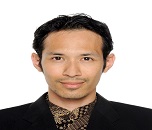
Biography:
Muhammad Yusuf Abduh has completed his PhD at the age of 31 years from the University of Groningen. He is the co-founder of Bio Proshafa Karya and Biorefinery Society, start-up companies in the valorization of renewable sources to produce bioproducts. He has published more than 10 papers and has been serving as a reviewer in reputed journals.
Abstract:
The time profile of moisture content for different fractions (PT-3, PT-7, PT-14, NPT-21) of trisperma seeds (Reutealis trisperma) was determined at a relative humidity of 67% and 27°C for a four months period. The diffusion coefficient of water in the trisperma seeds was determined using an analytical solution of the stationary diffusion equation and used to model the moisture content in the seeds. The total oil content of the seeds and the acid value of the extracted oil from the stored seeds were periodically measured for four months. The acid value of the extracted oil from the stored seeds increased for all conditions (1.1 to 2.8 mg KOH/g for PT-3, 1.9 to 9.9 mg KOH/g for PT-7, 3.4 to 11.6 mg KOH/g for PT-14 and 4.7 to 25.4 mg KOH/g for NPT-21). The acid value of trisperma oil and biodiesel that has been stored for four months (27°C, closed container) was also determined. Upon storage, the acid value of trisperma oil and biodiesel only slightly increased from 1.1 to 1.3 mg KOH/g and 0.4 to 0.43 mg KOH/g, respectively.
